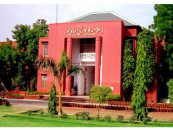Taxila’s rich heritage faces neglect
Archaeological treasures suffer from government inaction
1716751010-2/Taxila-heritage-artefacts-(2)1716751010-2-640x480.webp)
Throughout history, Taxila, a city rich in historical significance, has been home to numerous civilisations including Buddhism, Zoroastrianism, and empires such as the great Maurya dynasty.
This historical legacy ensures that Taxila is frequently mentioned in history books.
Despite this, many of its important archaeological sites, such as the remains from the Buddhist era included in the world cultural heritage, are suffering due to the negligence of the Department of Archaeology and the government. Notable sites affected include Sirkup, the Double-Headed Eagle Stupa, Jandial Temple, Jinnan Wali Dheri, Bhir Mond, Bhamala Stupa, and the Tomb of Anarkali in Hasan Abdal, along with the Sarai Kharboza. Among these is the iconic Nicholson Tower at the foot of the Margalla Hills.
Taxila, situated just forty minutes from the federal capital, holds great cultural significance for followers of Buddhism. The city also houses the Nicholson Tower, a monument of the Indian subcontinent, and two Roman-style rooms located on the Grand Trunk Road, which was constructed during the Sher Shah Suri era. The Nicholson Tower and the adjoining rooms (1822-1857) were built by friends of Brigadier General John Nicholson as a tribute to his memory. Nicholson was an officer who led British Indian troops from Khyber Pakhtunkhwa and Punjab to suppress the rebellion of 1857, which involved Sikhs, Muslim Punjabis, and Pathans.
1716751010-3/Taxila-heritage-artefacts-(1)1716751010-3.jpeg)
PHOTO: EXPRESS
He was killed in action during this conflict. The monument is prominently visible from a distance atop the Margalla Hills.
Near the base of the hill on GT Road, two small but beautiful Roman-style rooms are part of the Nicholson Tower complex. One room originally featured a water fountain to provide water to travellers, while the other likely served as a resting place. Although these structures are not widely mentioned in historical texts, local historians and the Department of Archaeology confirm their significance.
A board at the site bears only the name without much additional information. However, John Nicholson’s name is inscribed just above the fountain room arch, indicating his historical connection to the site, particularly his involvement in the Second Anglo-Sikh War of 1848-49, where he was injured.
Shakeel Ahmed, a truck driver who frequently parks near the tower, shared that he has been driving trucks for the past 15 years and has never seen any visitors, government representatives, or archaeologists at the site for its maintenance or restoration.
1716751010-1/Taxila-heritage-artefacts-(3)1716751010-1.jpeg)
PHOTO: EXPRESS
A student from Girls Degree College Taxila, located near the Nicholson Tower, mentioned that while she had seen the rooms and the tower, she had never sought to learn more about them, nor was any information provided by her college about this historical monument.
When contacted, officers from the Department of Archaeology in Taxila acknowledged the lack of staff but insisted that they are doing their best to manage all aspects of the sites under their care. They expressed hope that with more attention from the government, this important monument could be better preserved. They also suggested that establishing a tourist information desk at the entrance of Taxila could provide valuable information to visitors, thereby boosting the tourism sector.
Despite its rich historical heritage, Taxila’s significant sites remain underappreciated and neglected. Enhanced efforts in preservation and education could transform these neglected monuments into valuable cultural and educational resources. With proper maintenance and promotion, Taxila has the potential to become a major tourist attraction, contributing to both the preservation of history and the local economy.
1716751139-0/Taxila-heritage-artefacts-(4)1716751139-0.jpeg)
PHOTO: EXPRESS
Published in The Express Tribune, May 27th, 2024.


















COMMENTS
Comments are moderated and generally will be posted if they are on-topic and not abusive.
For more information, please see our Comments FAQ